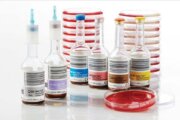As a species, human beings evolved long before fast-food joints and coffee shops offered tempting treats on every street corner. Our particular physiology developed to survive long periods of food scarcity between hunts, so we’re programmed to seek and enjoy high-calorie foods in expectation of coming lean times. Foods that provide a dense package of fat, sugar and calories fit this bill nicely. In the beginning, such foods were available in limited qualities or only seasonally. But in our modern world, a sugary sweet treat is always accessible.
The problem is, our risk for developing everything from obesity and heart disease to diabetes and even breast cancer can rise when we eat too much of certain foods. For many years, fat, salt and cholesterol shouldered the blame for most of these diseases that have a lifestyle component. But lately, sugar has caught up to the others, and a 2016 New York Times article indicated that it’s not just our cravings that have gotten the better of us, but also the greed of corporate entities looking to boost sales of their products.
[See: Which Medical Screenings Should You Have in 2017?]
Their tactics have apparently worked. According to SugarScience, an online resource created by scientists at the University of California, San Francisco, the average American consumes more than 66 pounds of added sugar every year, which works out to about 20 teaspoons per day or 82 grams. That’s significantly higher than recommendations from the American Heart Association and the World Health Organization suggest we should eat.
The U.S. Department of Agriculture defines added sugars as “sugars and syrups that are added to foods or beverages when they are processed or prepared. This does not include naturally occurring sugars such as those in milk and fruits.” The AHA recommends added sugars should be limited to six teaspoons (25 grams) per day for women and nine teaspoons (38 grams) for men. Depending on their age and caloric needs, children should limit added sugars in their diets to three to six teaspoons (12 to 25 grams) per day. The WHO recommends that adults consume no more than 10 percent of their calories as added sugars or natural sugars in honey, syrups and fruit juice. For a 2,000-calorie a day diet, 5 percent works out to 25 grams, or 6 teaspoons. When you consider that a 12-ounce can of cola packs 39 grams of sugar, that daily allotment starts to look really small.
Scientific studies are also uncovering the truth about sugar’s effects on our health. A 2016 study in the journal Cancer Research has drawn a direct line between sugar consumption and breast cancer in mice. Co-authored by Dr. Lorenzo Cohen, professor and director of the integrative medicine program at the University of Texas MD Anderson Cancer Center in Houston, the study looked at how sugar aids in developing breast cancer and breast cancer metastasis, or how it spreads throughout the body.
In the study, different groups of mice were fed added sugar in varying quantities. The lowest dose was equivalent to a person taking in 11 teaspoons, roughly 44 grams of added sugar a day, “significantly below the average consumption of the U.S. population,” Cohen says. Even so, the study found that consuming sugar in any of the doses they used accelerated the development and progression of breast cancer. What’s more, the more sugar the mice ate, the faster they developed breast cancer or the faster it metastasized. “What was quite scary was that even at the lowest dose, we saw negative effects,” Cohen says.
The study also compared the effects of glucose and fructose, the two molecules that combine to make sugar. (Sugar molecules are disaccharides, which can be split into two monosaccharides — fructose is one and glucose is the other.) “We separated the glucose molecules and the fructose molecules and looked at them separately and together,” giving some groups of mice just fructose, others just glucose, still others both molecules as separate elements and then another group the disaccharide that included both fructose and glucose. “It was clear from all the comparisons that it was the fructose that was causing the harm and not as much the glucose,” Cohen says. This is interesting, because “every cell in the body needs energy and the typical source of that energy is glucose. But we don’t need fructose to the degree that we’re consuming it.” Fruit juice is a prime source of fructose, as is the aptly named substance that hides in a lot of processed foods — high-fructose corn syrup, also sometimes called corn sugar.
[See: A Tour of Mammographic Screenings During Your Life.]
Sugar Feeds Inflammation
Cohen says that underlying all of these comparisons and findings is the body’s inflammatory process, which has been linked to the development of cancer and other chronic diseases. “We were looking at different inflammatory pathways, and found that the sugar was driving inflammation. It’s this inflammatory process that was driving the onset of cancer and the increased metastases. In fact, in subsequent models, if you blocked some of these inflammatory pathways, then the negative effects of sugar were diminished.”
Although inflammation in and of itself isn’t a bad thing — it’s a natural response from the immune system to an injury or infection that helps defend and heal the body — too much of it can cause problems. “Inflammation is a two-edged sword. Although a risk factor for cancer is increased inflammation in the body — and that’s why we believe that lifestyle factors can influence many cancers — you do need inflammation at the appropriate time to come on. For example, when you cut yourself, you want to have inflammation so you can heal. When you’re trying to fight a virus, you want to have your body mounting an inflammatory response.”
Although the study provides strong evidence of a connection between sugar consumption and breast cancer, Cohen notes that “these are mice, and mice are not humans.” However, “if you map this against the human data that exists, then the data become much more compelling.”
Therefore, it’s probably a smart bet to tame your sweet tooth in general, and particularly if you have other risk factors for breast cancer. By limiting the number of added sugars you consume, you’ll be lowering your risk for developing breast cancer and reducing your risk of heart disease, diabetes, obesity and several other diseases, the WHO reports. Also, be aware that not all sugar is obvious — spaghetti sauce, bread and bacon are just three of many surprising products that may contain added sugar — so start reading your food labels and choosing items that don’t list sugar or high-fructose corn syrup in the ingredient list.
[See: What Not to Say to a Breast Cancer Patient.]
In 2016, the USDA announced new food labels that would provide more information about added sugars to better help consumers choose lower-sugar items, but their roll-out has been delayed until May 2018. In the meanwhile, opt for more whole fruits and vegetables over processed foods and don’t drink too much juice or sugary beverages. You can train your palate to need less-sweet foods, it just takes a little effort.
More from U.S. News
What Not to Say to a Breast Cancer Patient
Which Medical Screenings Should You Have in 2017?
Breast Pain? Stop Worrying About Cancer
Does Consuming Sugar Increase My Risk of Developing Breast Cancer? originally appeared on usnews.com







